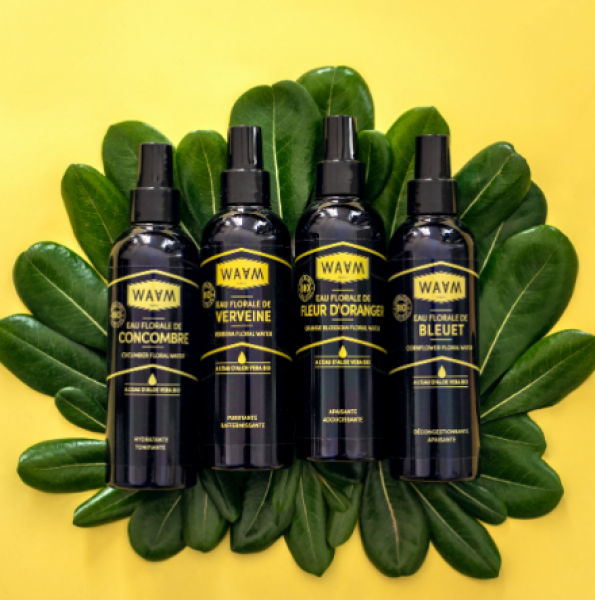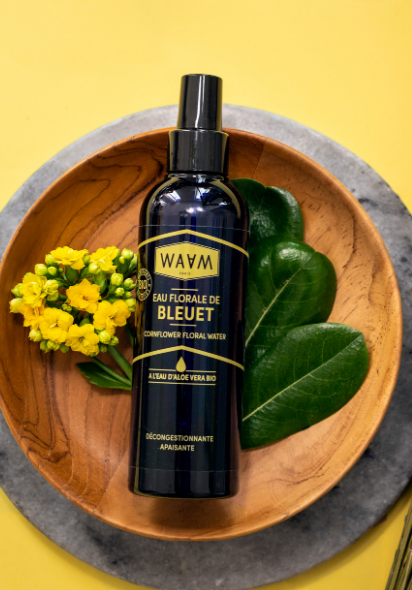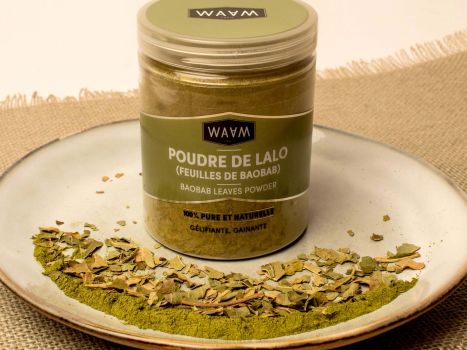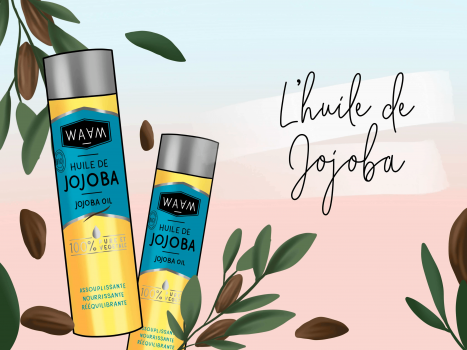Floral water is obtained from the distillation of flowers. For example, Damask Rose water or Cornflower water are floral waters. Lemon water, on the other hand, is actually a fruit water rather than a floral water.
Floral waters are made up of water and several milligrams of aromatic molecules of essential oil from the distilled flower (as in the case of Rose water, for example). However, unlike essential oils, floral water contains very few active ingredients. (If you'd like to know what an essential oil is and how to use it, read our article "All about essential oils").
This distilled water has virtues that can be softening, astringent, soothing... depending on the flower used. Thanks to its acidic pH, it is gentle and well-suited to use on the skin, whose balance it does not alter. Children and adults alike can enjoy the benefits of floral water.
Floral water and hydrolat: what's the difference?
Both are used in cosmetics. For example, both Rose floral water and Rose hydrosol are sold. So, what's the difference between the two?
Hydrolat is the water obtained after distillation of a plant. Floral water is water distilled from flowers only. In fact, the important thing to remember is that floral water is a category of hydrolat. Quite simply, it's a hydrolat...of flowers!
So why do we find Rose hydrolats and Rose floral waters? First of all, since floral water is a hydrosol, both names are correct. Generally speaking, the designation "hydrolat" or "floral water" is based on legislation.
Indeed, a hydrolat intended for cosmetic use (application to the skin and hair) must pass toxicological tests, meet various standards and obligations... And any hydrolat marketed as a cosmetic will bear the name of floral water, even if it is not obtained from flowers. Floral waters must contain a preservative. Its label must also mention any allergens it may contain.
Hydrosols intended for food use, on the other hand, may not make any cosmetic claims on the label.
Floral water should not be confused with :
- Flavored water, which is water infused with plants, essential oils or synthetic aromas.
- Micellar water, which is a make-up remover. It is generally made up of a floral water and lipophilic particles (also known as micelles) that trap greasy substances. It sometimes contains perfume.
- Macerates are the result of maceration of plants or flowers in contact with an oil.


.jpg)
.jpg)








